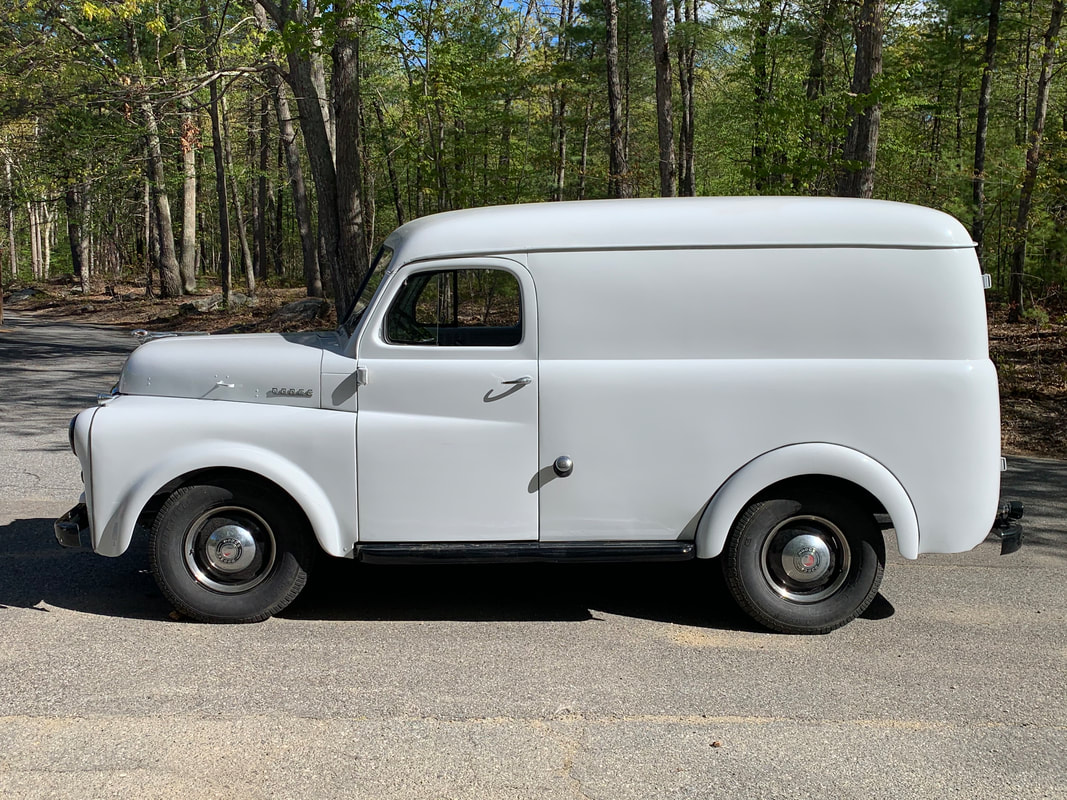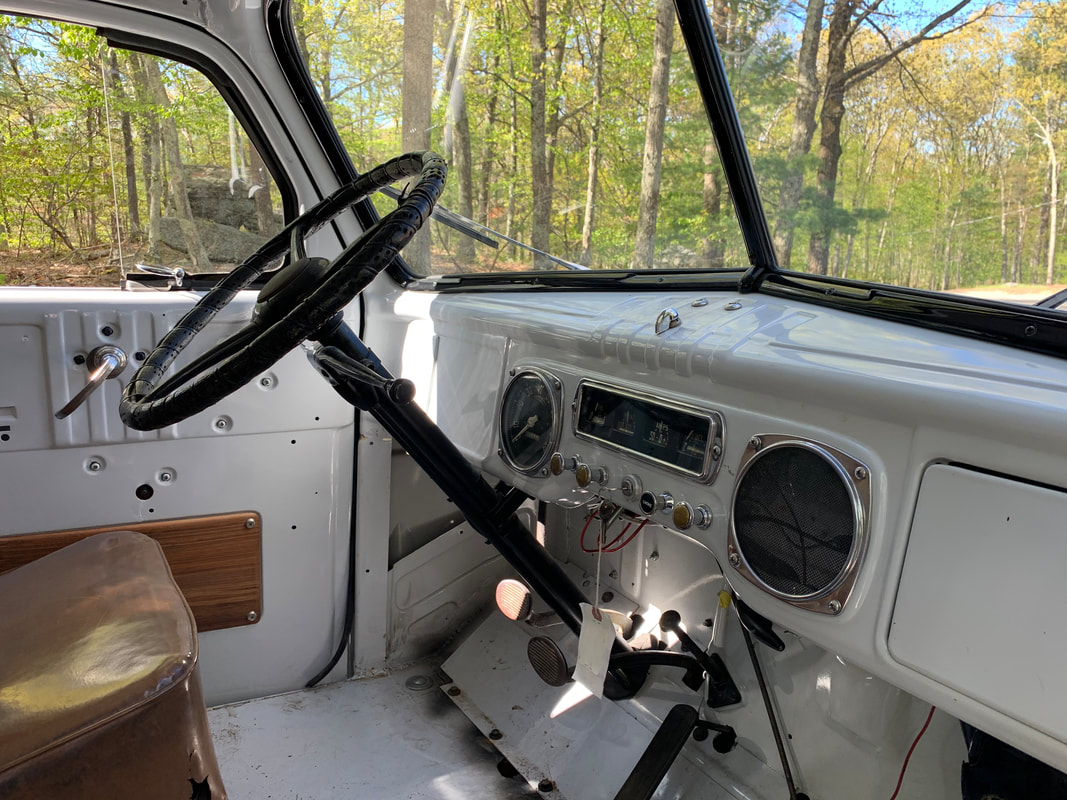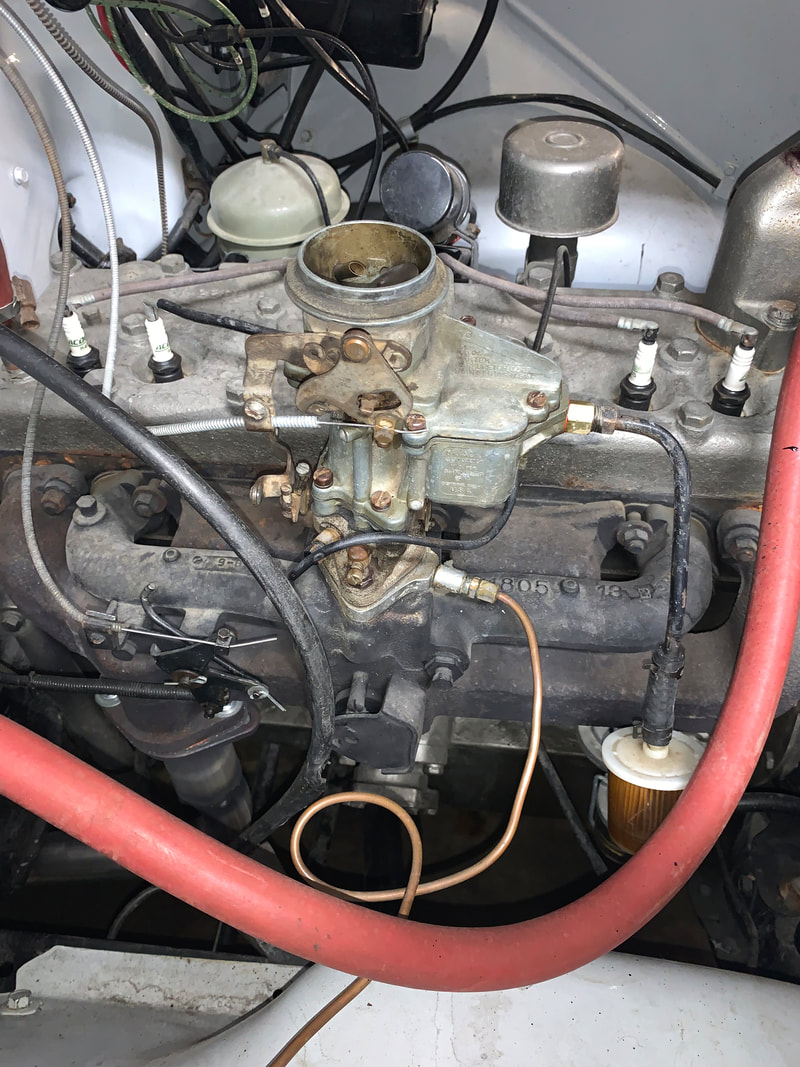1951 Dodge Route Van
The ’50 models marked the first subtle update to the Dodge B-series trucks that arrived for 1948. Introduced in October 1949, they newly incorporated a steering-column gearshift for the standard three-speed transmission and a “T”-handle parking-brake release mounted under the center of the dashboard, features that cleared up floor space in the cab. The changes might seem minor, but they were enough for Dodge to give its 1950 trucks a new B-2 designation. Basic styling stayed the same as on B-1s. So did wheelbases, chassis layout, and powertrains. Half-ton models were considered B-2-Bs. They rode a 108-inch wheelbase and were powered by a 218-cubic-inch L-head six-cylinder engine that produced 96 horsepower at 3600 rpm and 172 pound-feet of torque at 1200 rpm. Dodge continued to tout steering geometry that permitted tighter turns than competing trucks. A fundamental feature of the B-series design from its debut was shifting the front axle back while moving the engine further forward for improved maneuverability and better weight distribution. Semi-elliptic springs were employed at all four corners. The semi-floating hypoid-gear rear axle had a standard gear ratio of 4.1:1, with 4.78:1 available optionally. Hydraulic drum brakes featured cycle-bonded linings. B-2-Bs came in three chassis models (with flat cowl, cowl and windshield, or full cab) for aftermarket applications, as a pickup with a 6.5-foot cargo bed, or as a panel truck as seen here. Starting prices ran from $937 for a chassis/cowl unit to $1398 for the panel. The panel truck featured a cargo area that was 55 inches high, 63.38 inches wide, and 92.44 inches long behind the seats for a total of 155 cubic feet of load space. Depending on the springs selected, payload capacities ranged from 850 to 1450 pounds. (Tailoring individual trucks to the operator’s load needs was central to Dodge’s claim that its vehicles were “Job-Rated.”)The load floor was manufactured from seasoned hardwood and protected by steel skid strips that were welded to the subfloor. Steel scuff panels rose 22 inches up each side of the cargo hold to reinforce the bodysides against inside-out damage from the load. Two-position cargo doors could open to 90 degrees for on-street loading or extend to 180 degrees, which made it possible to handle cargo from loading docks. “Scientifically designed” seats included steel back panels to protect occupants from shifting loads.
Prior to being bought by R&D USA CLASSICS this truck had undergone a through body off frame renovation. The truck runs, drives and stops great.
This classic American Route Van is located in the Netherlands and is ready for your inspection . - July 2021
Prior to being bought by R&D USA CLASSICS this truck had undergone a through body off frame renovation. The truck runs, drives and stops great.
This classic American Route Van is located in the Netherlands and is ready for your inspection . - July 2021












